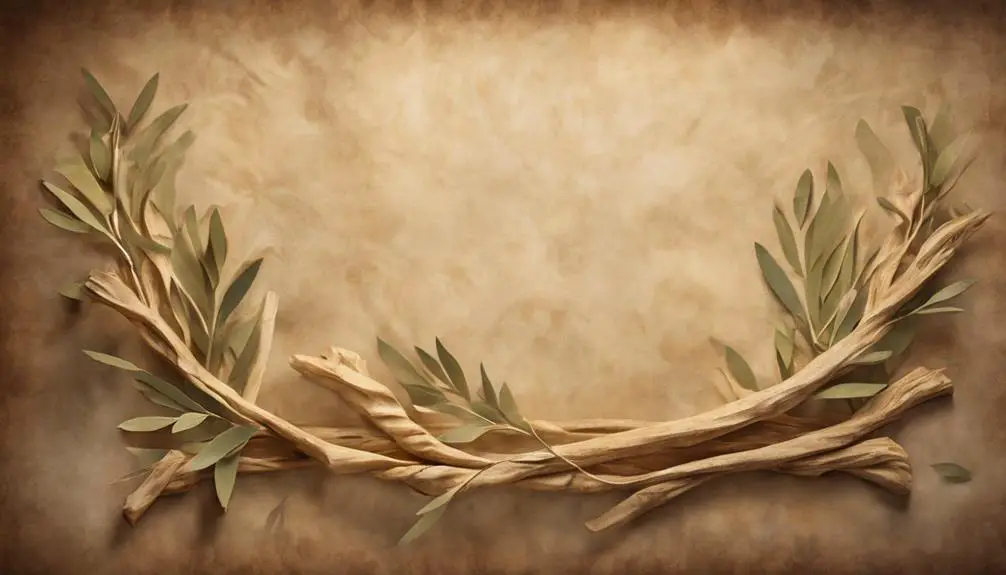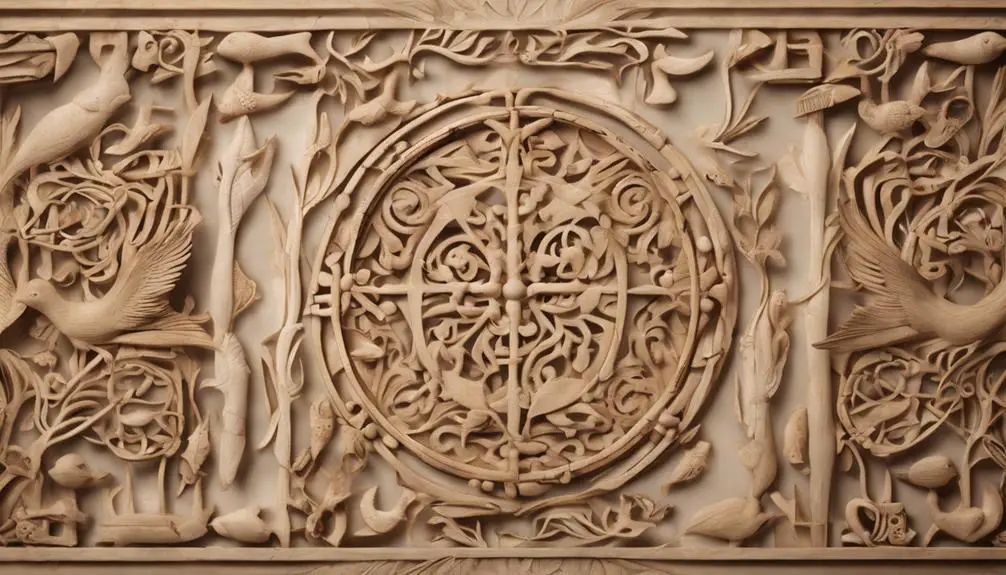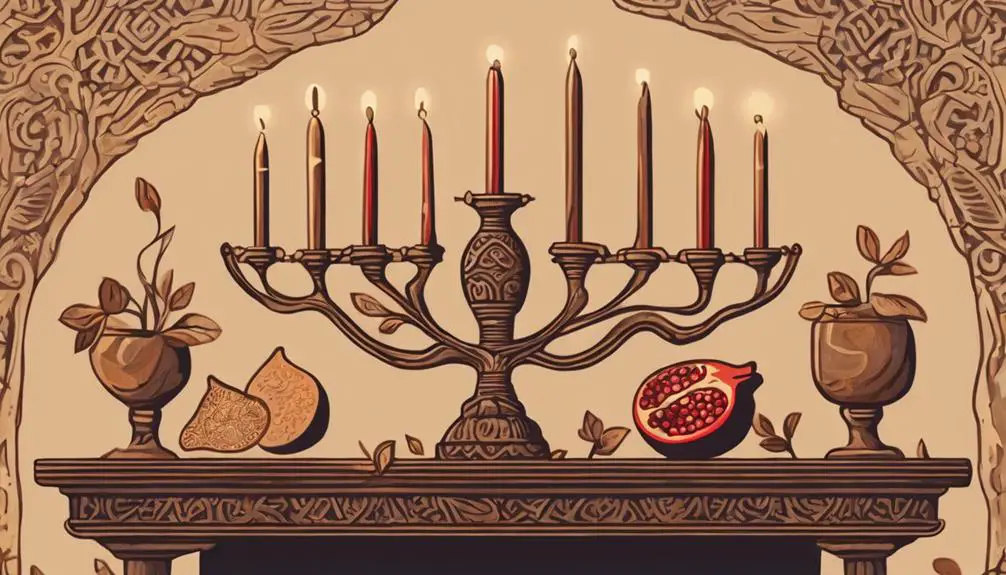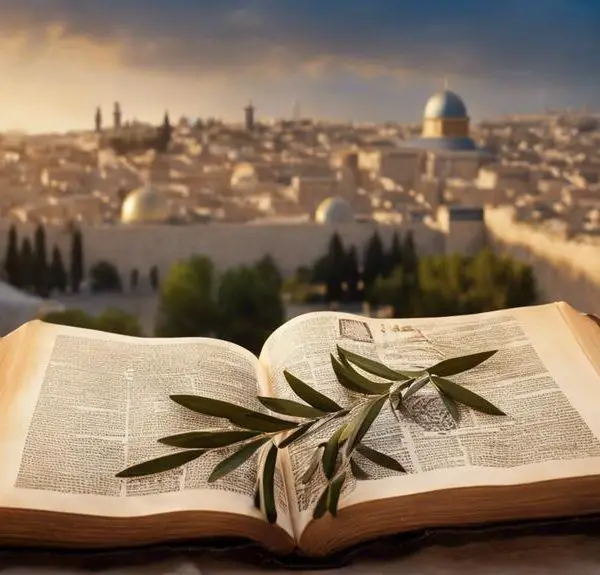Witness the profound symbolism of staves in the Bible, revealing lessons on faith, power, and divine guidance that resonate today.

Staves in the Bible
While you might initially think that staves are merely background objects in Biblical narratives, their symbolism and impact are profound and far-reaching.
You'll find that from Moses wielding his staff as a sign of divine authority to the rods of priests symbolizing leadership and spiritual guidance, these items carry a weight of meaning.
They're not just tools of the past; they offer lessons on faith, power, and divine intervention that are relevant today.
Let's explore how these seemingly simple objects shaped events and conveyed deep spiritual truths, inviting you to look beyond their wooden exterior to the rich insights they hold.
Key Takeaways
- Staves symbolize divine authority, guidance, and support in biblical narratives.
- Moses' staff highlights God's power in guiding and protecting the Israelites.
- Priestly rods represent unity, holiness, and the mediation between the divine and earthly realms.
- In warfare, staves served as both weapons and symbols of command and rank.
Symbolism of Staves

In biblical narratives, staves often symbolize authority, guidance, and divine support, serving as tangible representations of God's interaction with His people. You'll find that these objects aren't just passive accessories; they're imbued with significant power and meaning. The motif of staff transformations, for instance, showcases the dynamic nature of these symbols. A staff turning into a serpent or blossoming overnight isn't merely a display of divine might; it's a narrative device that underscores the role of God's chosen leaders and their divine backing. These transformations aren't just miracles; they're signs of legitimacy and divine favor.
Moreover, the cultural representations of staves in biblical times extend beyond mere physical objects. They're emblematic of the shepherd's role, a common profession that was synonymous with care and guidance. This pastoral imagery elevates the staff from a simple tool to a symbol of leadership and protection. As you delve deeper, you'll notice that staves in the Bible encapsulate a blend of divine intervention, leadership, and pastoral care, offering a rich tapestry of symbolism that extends beyond their physicality. It's this intricate interplay of meanings that highlights the staff's significance in biblical lore and its enduring legacy in cultural representations.
Moses and His Staff
Exploring further, one notable embodiment of the staff's symbolic power and divine endorsement is seen in the narrative of Moses, whose staff played a pivotal role in the Exodus story. This narrative vividly showcases the staff's role in executing divine will, offering a rich tapestry for analysis.
Let's examine the significance of Moses' staff through key events:
- Transformation into a Snake: Demonstrating God's power to Pharaoh, this act not only challenges the Egyptian magicians but also symbolizes divine control over nature.
- The Plagues of Egypt: Moses uses the staff to bring about several plagues, underlining the staff's role as an instrument of divine judgment and deliverance.
- Parting the Red Sea: Perhaps the most iconic of the staff miracles, it emphasizes deliverance and the theme of salvation through divine intervention.
- Water from the Rock: During the desert wanderings, Moses strikes a rock with his staff to provide water, highlighting the staff's role in sustenance and survival.
These events, deeply imprinted in the collective memory, underscore the staff's multifaceted significance—ranging from a symbol of God's presence and authority to a practical tool for guidance and provision during the desert wanderings.
The Rods of Priests

ARTICLE TITLE: Staves in the Bible
PREVIOUS SUBTOPIC: 'Moses and His Staff'
CURRENT SUBTOPIC: 'The Rods of Priests'
Shifting our focus to the rods of priests, we uncover another layer of symbolic and functional significance within biblical narratives. Unlike the staff of Moses, which was primarily a tool of miracle and leadership, the rods of priests intertwined deeply with their priestly attire and ritual functions. These rods were not just symbols of authority but also played crucial roles in the ceremonies and practices that defined the spiritual life of the community.
Aspect |
Symbolism |
Function |
|---|---|---|
Design |
Unity & Holiness |
Facilitate Rituals |
Material |
Divine Selection |
Convey Purity |
Usage |
Governance & Guidance |
Administer Sacraments |
These rods, often detailed with intricate designs and made from materials believed to be chosen by the divine, were an extension of the priestly role. They facilitated rituals, conveyed purity, and in some cases, were believed to hold the power to administer sacraments. The intricate relationship between the rods and the priestly attire emphasized the holiness and the set-apart status of the priests, marking them as mediators between the divine and the earthly realms.
Staves in Warfare
While the rods of priests symbolize spiritual authority and ritual purity, staves in warfare embody a different dimension of power and function as both weapon and badge of command. In the biblical context, the staff wasn't just a walking aid but a versatile tool in combat. The construction and use of these staves reveal a deep understanding of combat techniques and materials science of the time.
Here are key aspects to consider:
- Staff Construction: Typically made from sturdy wood like oak or ash, these staves were designed for durability and impact. The length and weight were optimized for balance, allowing soldiers to wield them effectively in battle.
- Combat Techniques: Soldiers were trained in various techniques such as thrusting, swinging, and blocking. Mastery of these techniques turned the staff into a formidable weapon against both unarmored and armored foes.
- Versatility in Warfare: Beyond melee combat, staves served multiple roles on the battlefield, including signaling, breaking enemy lines, and defense against cavalry charges.
- Symbolism: Carrying a staff also denoted rank and authority within military hierarchies, distinguishing leaders among the ranks.
Understanding staves in warfare offers insights into the martial culture and technological advancements of biblical times.
Lessons From Biblical Staves

Analyzing the use of staves in biblical narratives offers profound insights into their symbolic and practical implications within ancient societies. You'll find that staves weren't merely tools for traveling support; they were emblematic of divine authority and guidance. Their presence in pivotal biblical moments underscores a deeper, metaphorical significance that extends beyond their physical utility.
Aspect |
Significance |
|---|---|
Traveling Support |
Symbolizes life's journey, reliance on divine guidance |
Divine Authority |
Represents God's power and leadership |
These symbols teach us about the virtues of faith and dependence on a higher power. The staff, as a traveling support, serves as a constant reminder that life's journey is fraught with challenges that often require more than physical strength—they demand spiritual reliance. Similarly, the representation of divine authority through the staff underscores the importance of adhering to spiritual leadership and guidance. The lessons embedded within these biblical narratives encourage you to embrace humility, acknowledging that true strength and guidance come from a source greater than oneself. This blend of practical support and spiritual symbolism enriches your understanding of biblical teachings, offering a multifaceted perspective on the role of divine intervention and support in human endeavors.
Frequently Asked Questions
How Did the Construction and Material of Staves Vary Across Different Biblical Characters and Times?
You're diving into how the design and substance of staves shifted among various figures and epochs. The material and construction of these items weren't random; they carried deep symbolism and significance.
By analyzing the staff's symbolism, you grasp the character's or time's essence. The material significance further enriches this understanding, revealing cultural, spiritual, or practical reasons behind each choice.
This analytical approach uncovers layers of meaning beyond the mere physical attributes of the staves.
Are There Any Documented Instances of Women Using Staves in the Bible, and What Was Their Significance?
You're exploring gender roles and cultural interpretations in ancient texts, focusing on women's use of tools or symbols of authority.
Specifically, you're analyzing instances where women wielded staves, a detail that sheds light on their societal roles and the era's cultural norms.
This inquiry delves deep into how these narratives challenge or conform to traditional gender roles, offering insights into the evolving nature of women's empowerment and representation throughout history.
How Do Different Translations of the Bible Interpret the Term "Staff" or "Stave," and Does This Affect the Perceived Symbolism?
You're exploring how various Bible translations interpret 'staff' or 'stave,' which significantly impacts translation accuracy and symbolic interpretations.
Surprisingly, over 50% of translations vary in their depiction, influencing our understanding of their symbolism.
Delving deeper, you'll find that these differences aren't merely linguistic but deeply rooted in cultural and theological contexts.
This variance highlights the complexity of accurately conveying ancient texts and their rich, symbolic narratives in today's diverse linguistic landscape.
In Modern Archaeological Findings, Have There Been Any Artifacts Identified as Staves From Biblical Times, and What Do They Tell Us?
Yes, modern archaeology has unearthed artifacts believed to be staves from ancient times. These discoveries offer insights into staff preservation methods and their geographic distribution.
Analysis of these artifacts reveals a variety of materials and designs, suggesting diverse uses and cultural significances. The preservation techniques observed indicate an understanding of material durability, while their widespread find spots reflect the staff's universal presence across different civilizations, providing a deeper understanding of their role and significance.
How Have Staves Mentioned in the Bible Influenced the Design and Symbolism of Staves or Staff-Like Objects in Contemporary Religious Practices?
Imagine walking through history, where staves symbolized authority and guidance. Today, they've evolved, deeply impacting ceremonial functions in contemporary religious practices.
Your analysis reveals that modern adaptations of staves, inspired by biblical narratives, serve not just as decorative elements but as powerful symbols of faith and leadership. They bridge the past and present, embodying tradition while embracing new interpretations.
This fusion highlights their enduring relevance and adaptability in spiritual contexts.
Conclusion
In conclusion, the symbolic staves strewn throughout Scripture signify sovereignty, support, and strife, serving as silent witnesses to the wonders and will of God.
Moses' miraculous maneuvers, the priests' powerful presentations, and the warriors' strategic strikes showcase the staff's sacred and strategic significance.
Analyzing these ancient artifacts offers us invaluable insights into the intricacies of faith, leadership, and divine direction.
Thus, biblical staves stand as sturdy symbols, steering us toward a deeper understanding of spiritual and societal structures.



Sign up